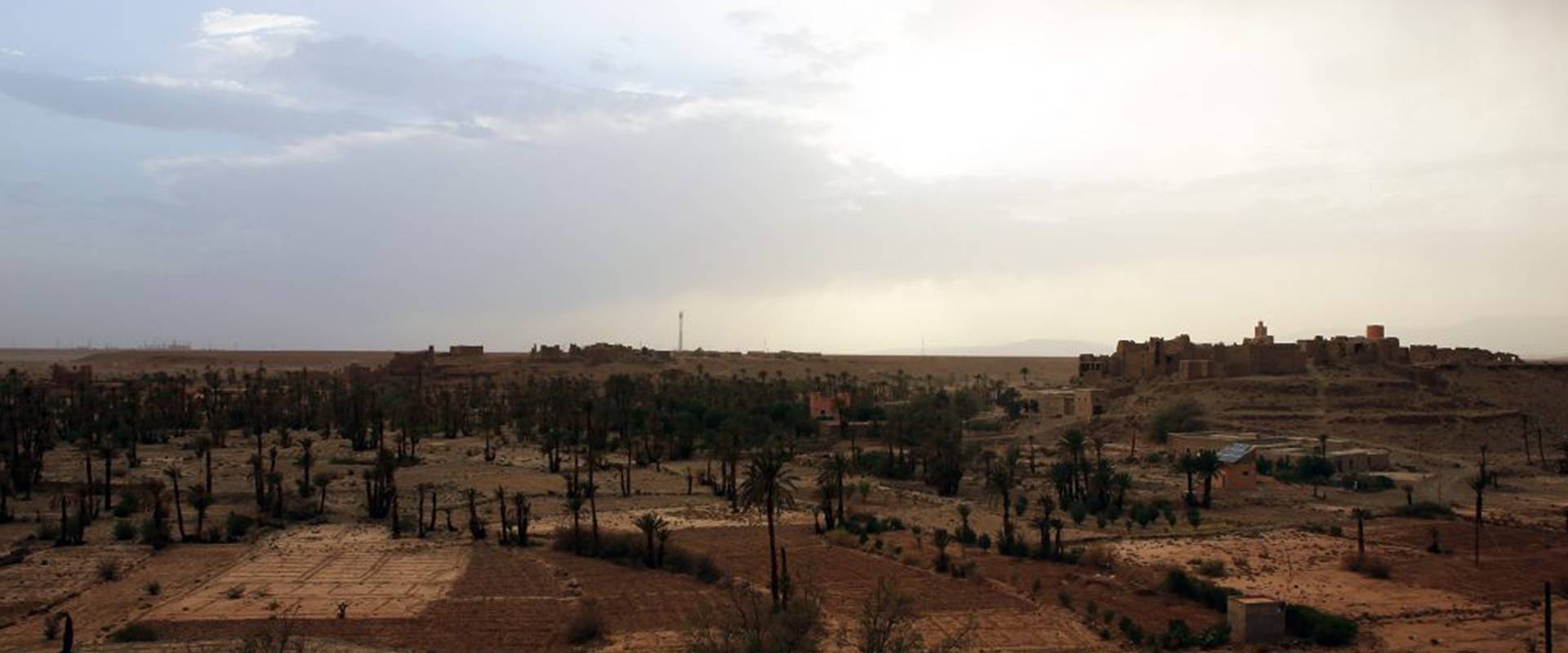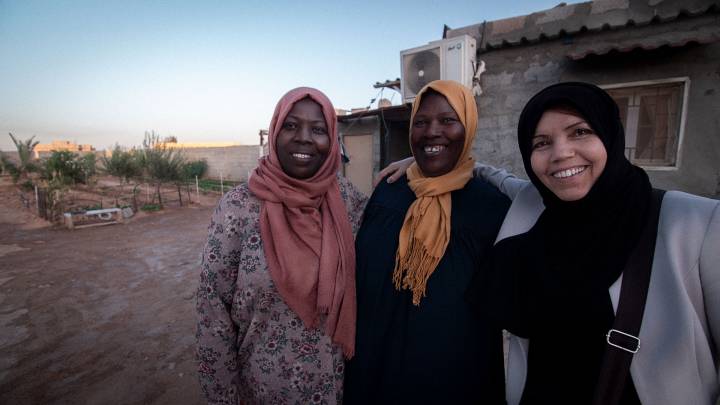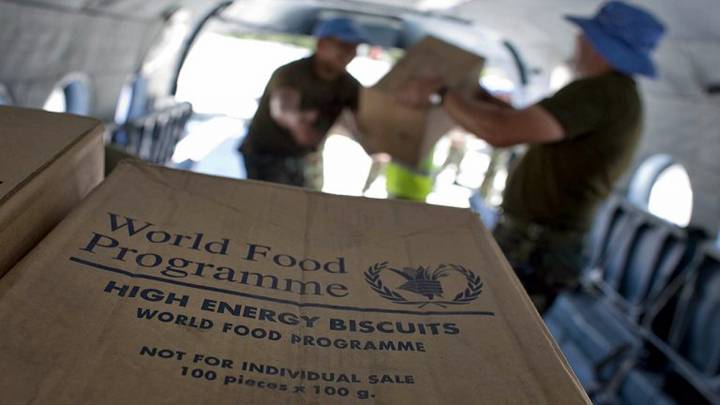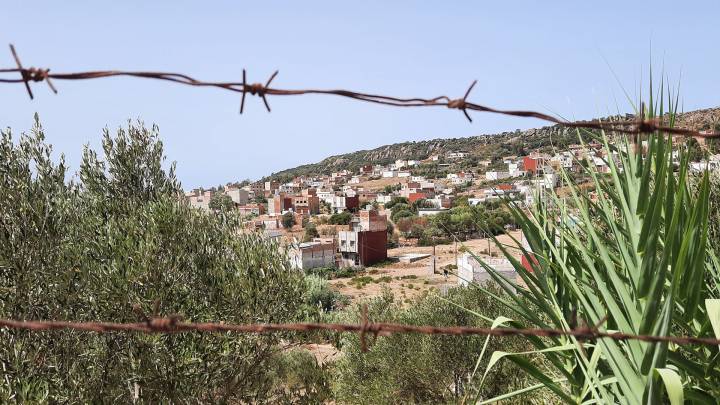The Nour Solar Power Station was supposed to kickstart Morocco’s energy revolution and boost local economy. Now, residents feel abandoned and cheated and accuse the government of land-grabbing.
Ten years ago, Hassan Abu el-Saïd, a farmer in his sixties, grudgingly accepted the cession of a piece of collective land (land owned by an ethnic collective, or soulaliyate) for the installation of the Ouarzazate Solar Power Station, also known as the Noor Power Station. He did not want to “sell the land cheaply, but the other collective representatives agreed after a multitude of promises that good things would come along with the Noor Power Station”.
Today, long after the complex started operating, this glimmer of hope has disappeared and desolation has moved in. Promised jobs for the local population have not materialised, and Abu el-Saïd’s land has barely survived a drought exacerbated by the drying up of the nearby dam.
The Noor Power Station is 10km south of the city of Ouarzazate, amidst what are now barren lands. Since the start of the project in 2010, its development has been accompanied by media hullabaloo in Morocco and beyond, praising it as part of the wider royal strategy to set the Kingdom off into the future of renewable energies and environmentally friendly industries.
On our visit to Ouarzazate in July, after the lifting of the lockdown, we find the city – the Hollywood of Morocco and a popular destination for nature enthusiasts – almost deserted. There is nervous anticipation in the air, and the socioeconomic suffering this city has seen is written all over the faces of those still roaming its streets.
People here have been waiting in vain for the Noor Power Station to give them jobs and change their lives for the better, especially in the surrounding rural municipality of Ghassate where land, including that of Hassan Abu el-Saïd, was bought for a mere dirham per square metre to make room for modern technology.
Dry and Barren
Abu el-Saïd is a representative of the Ait Oukrour soulaliyate, which used to own the land that the Noor Power Station now occupies. His land has been left barren. Even the palm trees, resilient enough to thrive in a harsh desert climate, have died. “Most of the palm trees in the area have died following a measure by the company ACWA Power [the Saudi company that operates the power station]. The company spent significant sums on a project to strip the lands surrounding the station of palm trees. As you can see, most palm trees have died after what the company did to them,” he says.
The majority of farmers in the area, who used to make a living from almond trees or other crops cultivated on their small-scale farms, are now struggling in light of a dramatic water shortage. Drought was already taking a toll on agriculture and life in the area, and the El-Mansour Eddahbi Dam has now dried up as well.
Not far from Abu el-Saïd’s land we meet a farmer in his seventies who supports the two children his deceased son has left behind. His farm is between the empty El-Mansour Eddahbi Dam, the Noor Power Station and the dried-out grounds of Royal Golf, and is now completely cut off from water, the life source of his small farm. He complains: “Obtaining water, even for drinking, has become a daily struggle. The ground is dry and cracked.” To have enough to drink, he relies on an organisation that delivers a water tank to him every Friday.
Fruitless Resistance
The people of the Ait Oukrour collective did not expect to find themselves engaged in hunger strikes and protests in front of the Noor Power Station, built on the land of their ancestors, to demand the glimmer of hope sold to them in return for their land. They demand an end of unemployment in rural Ghassate, the burden of which weighs heavily on the youth.
The local authorities promised them, says Saeed Boukeer, a member of the Ait Oukrour collective and advisor of the opposition in Ghassate, “to give fifty percent of the jobs in the Noor Station to the local population”. He adds: “The agent negotiating the expropriation of the collective land told the people at the time that the project developed on their lands was the King’s and that it would bring good things to the region, including jobs and training for the local youth in professions required on the site.”
But all of those promises were smoke and mirrors. When local authorities did not deliver on the jobs, young people took to the streets in protest, ending up with lawsuits by the operator of the Noor Power Station and the public prosecution. “There is no one left we can talk to, not about jobs or anything else,” says Abu el-Saïd. “I contacted the company operating Noor Power Station to inquire about the possibility of training for my daughter, who has graduated from the School of Engineering Science in Casablanca. No answer from them on the training, let alone employment.”
Legal Expropriation or Real Estate Predation?
The expropriation of collective land for the benefit of state or even private enterprise has become common practice in Morocco, helped by the fact that Law no. 62-17 in August 2019 made the Ministry of the Interior the trustee of this type of land. But even before the issuance of the law, land seizure was effortless where collective lands were concerned.
The Ait Oukrour collective is a good example. Its land was bought for the benefit of the National Office for Electricity and Drinking Water (ONEE) for one dirham per square metre, then ceded to the Moroccan Agency for Solar Energy (Masen), which headed the solar power project in Ouarzazate in 2010. Behind it stands a public company of unknown name which, according to the commercial register of the city of Rabat, registration number 79835, has a capital stock of 2.25 billion dirham. “The State owns the majority of its capital directly or indirectly,” according to Article 1 of Law no. 57-09 relating to the establishment of Masen.
Hassan Abu el-Saïd recalls: “The land expropriation process happened in the beginning without consultation of all collective representatives, until the seizure order was issued, and we were summoned as representatives to sign a declaration on the cession to the Trusteeship Council of the Ministry of the Interior. We then discovered that a declaration existed, which was signed by only two collective representatives. I personally refused to sign the land cession declaration. The other representatives agreed to sell 2,500 hectares for this price to ONEE, without consulting the people of the Ait Oukrour collective.”
On the same day that the cession of these 2,500 hectares was agreed by contract, ONEE ceded it to Masen. Four days later Mohamed Boussaïd, Governor of the Souss-Massa-Drâa region and former Minister of Economy and Finance, signed a Certificate of Non-Agricultural Vocation in favour of Masen which excluded the allocation of the land for agricultural activity. It was a procedure completed in record time, as even the Regional Investment Centres specify that the completion of this process takes 33 days.
Dispossession of Land and Water
The expropriation of collective land in Ghassate has not stopped at 2,500 hectares for the Noor Power Station. An additional 49 hectares in total were seized three years later. The first occasion was the installation of a pumping station to exploit the water in the El-Mansour Eddahbi Dam for cooling and washing solar panels. In this case, the cession agreement, which transferred 34 hectares adjacent to the El-Mansour Eddahbi dam to ONEE – Electricity Division, was signed by one collective representative only, Fakhdat Azlakin, in the capacity as an estate agent.
On the second occasion, Ait Oukrour representatives agreed to the cession of 15 hectares of land close to the Noor Power Station for the purpose of building a canal linking the dam to it. However, this time the signing of the cession statement issued by the Trusteeship Council was preceded by the establishment of a real estate appraisal committee by the Ministry of the Interior, which fixed the cession price for both pieces of land at three dirham per square metre.
The installation of the pumping station and canal raised a lot of concerns about how much water the Noor Power Station would actually consume, particularly as, that same year, Ouarzazate inhabitants had problems with the quality of their drinking water, which had a strange taste, and were forced to resort to springs for their supply. In late July 2020, the city was connected to the Tiouine Dam, after the El-Mansour Eddahbi Dam had dried up due to drought and intense use of water by the Noor Power Station. Notably, its director, Mustafa Salam, had argued in previous press statements that the station would use no more than one percent of the dam’s overall capacity.#
The reality of a completely empty dam, however, speaks a different truth. Upon our visit, the clear blue water that filled its reservoir until 2013 has made way for black, cracked earth. This has had a staggering impact on the agricultural life of the Ghassate community, which provided land and water for the solar energy project and has reaped nothing but the mirage of socioeconomic change. Our interviews with collective representative Hassan Abu el-Saïd and advisor Saeed Boukeer, as well as the suffering of a seventy-year-old farmer cut off from his water supply, confirm this assessment.
Collective Failure
In the face of all promises and hopes tied to the renewable energy project, which the Moroccan government has announced as a strategic move in its official communication, the public institutions responsible for energy (ONEE and Masen) are financially strained.
According to an official report of the Socioeconomic and Environmental Council issued in July 2020, Masen’s annual deficit caused by Noor stations 1, 2 and 3 has reached about 800 million dirhams. The report states that the deficit arises from the gap between the purchase price as per producer price index and the selling price. While the production cost of one kilowatt hour is 1.62 dirham in Noor 1, 1.38 dirham in Noor 2 and 1.42 dirham in Noor 3, it is sold to ONEE for the price of 0.85 dirham. The high production costs as well as the deficit run by Masen stem from “the adoption of centralised solar energy technology at the solar power stations Noor 1, 2 and 3 Ouarzazate”, the report says.
For the protection of our environment and climate, the generation of clean energy is a global priority. However, noble projects must not come at the cost of unfair land expropriation, the violation of socioeconomic rights and destruction of livelihood, with local resources over-exploited for the benefit of industrial enterprises. With the El-Mansour Eddahbi Dam dried up, hundreds of families in Ghassate struggle to quench their thirst and cultivate their farms.
The Noor Power Station has robbed the Ait Oukrour collective of most of its land. Hassan Abu el-Saïd says: “So far, we have not benefited from the money Masen has promised in compensation for our land. It stayed with the Rural Affairs Directorate in the Ministry of the Interior [the trustee for collective land]. They decided that it would be used to fund social projects for the people here, like school transport, palm tree nurseries and other things that can help small farms.”
These projects are usually funded under existing programmes such as the Green Morocco Plan or the National Initiative for Human Development, or paid for by collectives from their own budget.
The research for this article was supported by the Candid Foundation’s journalism grant.
Note: Throughout the preparation of this investigation, we have attempted to communicate with the responsible parties at Masen and ONEE in order to give them an opportunity to respond. Unfortunately, all attempts have failed.




